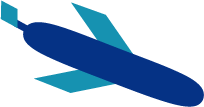About IOOS by the Numbers
These data were obtained from multiple sources in March 2016. The original source for each value is identified below. Links to each federal partner or regional association are provided.
FEDERAL PARTNERS
 |  |  |  |
 |  |  |  |
 |  |  |  |
 |  |  |  |
 |
Currently, there are 17 federal organizations named as partners in U.S. IOOS. These agencies were also members of the statutorily mandated National Ocean Research Leadership Council (NORLC), under 10 U.S.C. § 7902. These organizations provide active support, funding, guidance, or advice to the program. The first 11 federal partners listed here are also part of the Interagency Ocean Observation Committee (IOOC). These 11 members play a direct oversight role in the development of U.S. IOOS.
REGIONAL ASSOCIATIONS
There are 11 Regional Associations (RAs) which guide development of and stakeholder input to regional observing activities. The RAs serve the nation’s coastal communities, including the Great Lakes, the Caribbean and the Pacific Islands and territories.
 ALLIANCE FOR COASTAL TECHNOLOGIES
ALLIANCE FOR COASTAL TECHNOLOGIES
ACT is a partnership of research institutions, resource managers, and private sector companies dedicated to fostering development and adoption of effective and reliable sensors and sensor platforms for environmental monitoring and long-term stewardship of coastal ocean resources. ACT addresses the need for rapid technology integration into operational ocean observing systems and monitoring programs. The program is designed to facilitate creation and application of knowledge of current and emerging ocean observing technologies to improve the capabilities of existing observations and deliver new technological solutions to address specific global environmental issues and operational ocean observing challenges. The overall objectives of ACT are to:
- Rapidly and effectively transition emerging technologies to operational use
- Maintain a dialogue among technology users, developers, and providers
- Identify technology needs and novel tools and approaches to meet those needs
- Document the performance and potential of each technology
- Provide the Integrated Ocean Observing System (IOOS®) with information required for the deployment of reliable and cost-effective networks.
 COASTAL OCEAN MODELING TESTBED
COASTAL OCEAN MODELING TESTBED
The COMT serves as a conduit between the federal operational and research communities and allows sharing of numerical models, observations and software tools. The COMT supports integration, comparison, scientific analyses and archiving of data and model output needed to elucidate, prioritize, and resolve federal and regional operational coastal ocean issues associated with a range of existing and emerging coastal oceanic, hydrologic, and ecological models. The Testbed has enabled significant community building (within the modeling community as well as enhancing academic and federal operational relations) which has dramatically improved model development.
 MARINE BIODIVERSITY OBSERVATORY NETWORK
MARINE BIODIVERSITY OBSERVATORY NETWORK
The Marine Biodiversity Observation Network is composed of regional networks of scientists, resource managers, and end-users working to integrate data from existing long-term programs to improve our understanding of changes and connections between marine biodiversity and ecosystem functions.
MBON regional projects collaborate to discuss common interests, discuss strategies, methods, and define essential biodiversity variables.
 NATIONAL PLATFORMS
NATIONAL PLATFORMS
The National backbone of IOOS includes buoys, water level gauges,as well as coastal and estuary stations run by our federal partners. For buoys, this includes bouys managed by NOAA’s Center for Operational Oceanographic Products and Services (CO-OPS), and the Coastal Data Information Program (CDIP). Water level gauges are also managed by CO-OPs. The coastal and estuary stations are maintained through NOAA’s National Estuarine Research Reserves (NERR) System-Wide Management Program (SWMP).
 REGIONAL PLATFORMS
REGIONAL PLATFORMS
The Regional Association Platforms include buoys, water level stations, and coastal or estuary shore-based stations. These platforms are maintained by the regional associations through non federal funds.
 OCEAN TECHNOLOGY TRANSITION PROJECTS
OCEAN TECHNOLOGY TRANSITION PROJECTS
The IOOS Ocean Technology Transition project sponsors the transition of emerging marine observing technologies, for which there is an existing operational requirement and a demonstrated commitment to integration and use by the ocean observing community, to operational mode. Each year IOOS supports 2-4 projects. The number here reflects the total number projects supported by this effort.
 ANIMAL TELEMETRY PROJECTS
ANIMAL TELEMETRY PROJECTS
The IOOS Animal Telemetry Network (IOOS ATN) is designed to serve as an access point to search, discover and access animal telemetry data, and associated oceanographic datasets, from a wide variety of species and platforms.
 HF-RADAR INSTALLATIONS
HF-RADAR INSTALLATIONS
High frequency (HF) radar systems measure the speed and direction of ocean surface currents in near real time. Presently, 10 of the 11 U.S. IOOS regional Associations operated high frequency radar systems. Ocean surface current data from these radars are shared on national servers, which deliver the data to anyone who needs it. The number of HF Radar installations continues to grow as IOOS works towards making the entire coastline of the US covered with current measurements.
 GLIDER DAYS
GLIDER DAYS
Gliders monitor water currents, temperature, and conditions that reveal effects from storms, impacts on fisheries, and the quality of our water. This information creates a more complete picture of what is happening in the ocean, as well as trends scientists might be able to detect. One “Glider Day” is defined as 1 glider in the water collecting data for 1 day.
 QARTOD
QARTOD
As of the last update there are eight QARTOD manuals in-place for IOOS. These manuals establish authoritative QA/QC procedures for oceanographic data.
 DATASETS
DATASETS
The number of datasets available from IOOS changes constantly as more data is registered to the catalog. The exact number of datasets at any given time is provided on the Data Discovery page.
 SERVERS
SERVERS
Top level domain (TLD) servers hosts the data that compose the IOOS Catalog. Each server is owned and operated by either a national partner or a regional association.











